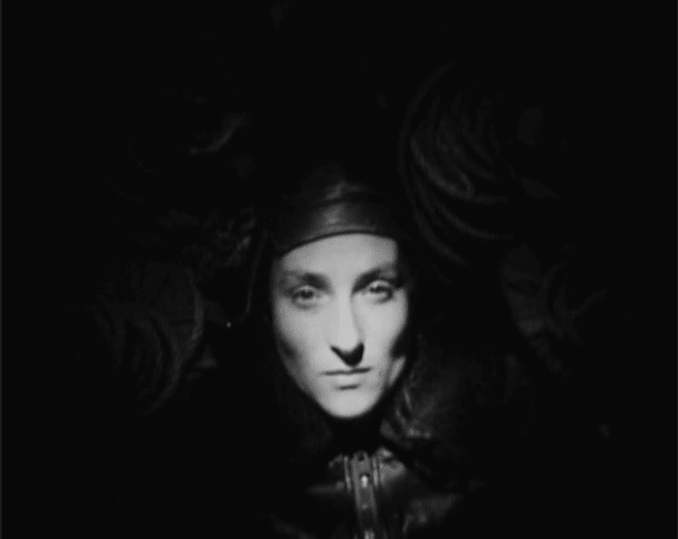The dull grey sky is laden down in the rainy season. The light is misty making the workable area smaller. Since opening almost four years ago, Galerie Cécile Fakhoury proposes, during this period, a project that interrupts the flow of solo exhibitions that take place throughout the rest of the year. A window is opened out onto new artistic territories for the public to explore.
The exhibition Lueurs noires (Dark glimmers) brings together two artists who both operate through image: photography is the medium of reproduction, the medium through which light leaves its mark on the film and reveals the retinal memory. In their research, they rethink the boundaries of visual expression. François-Xavier Gbré documents and intervenes in the urban landscape, his photographs, loaded with silence, examine the evolution or the disappearance of an architecture marked by contemporary and colonial history. In a multi-faceted work Yo-Yo Gonthier questions numerous forms of dream and our relationships with the world in a near and far, beyond geography.
Both of their artwork has just been exhibited in the former courthouse of Dakar during the 12th edition of the Dakar Biennale. The gallery brings their two proposals together in an exhibition dedicated to them: the installation Wo shi Feizhou /Je suis africain (I am African) by François-Xavier Gbré and the film A Sunny Spell (An Acrobat’s Dream) by Yo-Yo Gonthier.
The surface of the gallery is covered in black and dark blue. Darkness permeates the venue. A precise and captivating brightness emerges from the dusk here and there. The corridor in a continuation of the entrance leads to a hypnotic light emanating from an outline of characters in a foreign language. An empty space at the front, revealing graphic prints and arranged elements, is sparingly lit.
A reverse angle reveals on both sides of the passage two black boxes that we enter whispering. This apparatus lends an element of oddness and fascination. The bright contours, the two confined areas, and the elements found on the concrete floor immerse us in an unknown landscape.
One of the screening rooms presents three chapters of a film produced during the performance Le nuage qui parlait (The Cloud who Spoke) by Yo-Yo Gonthier in July 2015 in Abidjan. When immersed in flowing images and sounds, the memory becomes engaged in finding extracts of past experiences and restoring them. The performance project began at the gallery during a drawing workshop with a group of children and with Ivorian artists working in different of disciplines. From the table of this research lab/workshop to a performance in the town, the itinerant project made its mark as demonstrated in these films. The cloud has travelled to towns since its creation in 2013 in France. Its presence and passage enriches the collective imagination. It bears and diffuses the impression of journeys and encounters.
In the other black room, the film Une éclaircie, le rêve d’une acrobate (A Sunny Spell, An Acrobat’s Dream) filmed in Super8, fluctuates between anxiety, access to dreams and overcoming reality. The central focus is Le nuage qui parlait (The cloud who spoke) and the heroine an acrobat, the narration evolves along avenues sliding from fiction and illusion towards a sudden awakening to an ambiguous reality. The grainy image processing intersects the fable with accidents that Yo-Yo Gonthier develops as his experience with the silk creature that he has produced evolves. The object created is a puppet that he brings into existence, in dialogue sequences and fictional accounts, as well as recorded and staged images. Scenarios depicting the disaster or success experienced by the cotton beast take shape to show more dreams and the intangible. The reverie is a response to a factual society that tends to forget the magical spirits that govern another part of the world, the sensitive world. Une éclaircie, le rêve d’une acrobate (A Sunny Spell, An Acrobat’s Dream) refers to the determination to cling to dreams that by their very nature undeniably escape. Ultimately they enable us to become self-aware, to awaken fears, to apprehend and control them in order to gain more freedom. A sunny spell is only a fleeting visual impression, a sign of the hidden. When the sky is obscured the light breaks through.
In his installation, Wo shi Feizhou / Je suis africain (I am African) François-Xavier Gbré investigates what the city is concealing. The work raises the issue of urban change. A Chinese ideogram lit with neon adapts the assertion of a complex identity, I am African. The sharp light stands out from the profound and iconic ultramarine blue background. In a lightning claim, the words play around with the balanced script and their imperceptible meaning at first glance. The luminous sign recalls the commercial advertising used to sell consumables through an effective slogan. The foreign phrase resonates in context with the development of prolific property projects conducted by Chinese entrepreneurs in Africa. The mellow elements that construct the installation emerge as beacons. A fairly high table displays models resembling a cityscape. The same letters meaning I am African are in the form of a cement brick matrix similar to those used to rapidly build new African housing. On the wall, photographs printed on the cold surface of aluminium suggest a construction site sign/lexicon with simple, specific and persuasive working world terms, in Chinese and in French. The artificial lights and loose interpretations of assembly proposed by François-Xavier Gbré, conjure up the idea of urban ferment and with it, the eradication of an ancient world. The future of design is emerging in the twilight.
Lueurs noires (Dark Glimmers) provides an opportunity to explore two sensitive approaches arising out of apparent reality, everyday life, the city and the community. The persistence of the light and the images shows through, as self-evident as the connections between the imaginary lands of Yo-Yo Gonthier and François-Xavier Gbré.


